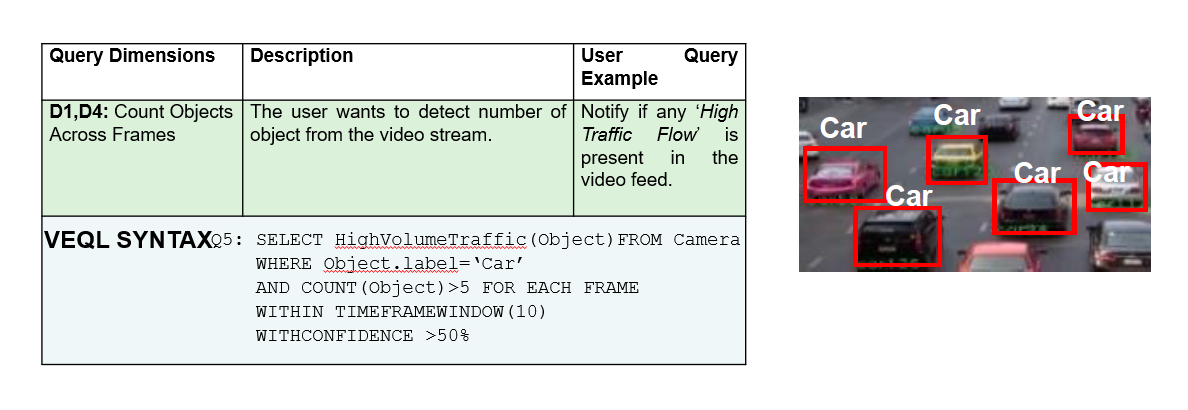The Potential of VidCEP in Traffic Management
The potential of VidCEP is shown in the traffic management domain. Five VEQL queries, shown in Figure 1-5, are enlisted in increasing order of their complexity in the traffic management domain.

Figure 1. VEQL Query 1 and its sample output

Figure 2. VEQL Query 2 and its sample output

Figure 3. VEQL Query 3 and its sample output

Figure 4. VEQL Query 4 and its sample output

Figure 5. VEQL Query 5 and its sample output
User-defined Vehicle Event Detection in Smart Cities
Consider the scenario of object detection (like vehicle detection) for analyzing multimedia events in smart cities. Suppose a user subscribes for the status of “Bus” as “Is a Bus on the Bus Stand?” (shown in Figure 6).

Figure 6. Smart Transport Management Event Detection
This type of query can be answered from a camera observing the bus stand and producing multimedia events consisting of bus status-related information. If we have a system like “Public Transport Management”, and a bus is arriving or already arrived, then such a system will notify a user by detecting objects in image events that “Yes, the bus is present”. However, if a subscriber subscribes when the bus is already gone, the subscriber will get notified “no, the bus is gone” instantly. A demo is shown below:
Similarly, if a user subscribes for the detection of “taxi” such as “Is taxi present?”, then this type of query cannot be answered using existing public transport based systems and eventually require a specific “Taxi Management” system, and again such non-adaptive system will not be able to respond to the request of new subscriptions like “ambulance” or even own “car” of the user. However, if we have an adaptive multimedia event processing system with the provision of online training and any completely unseen concept like truck, car, taxi, bicycle, etc., arrives then such query can be answered automatically by training a new classifier online for the subscription or by updating an existing classifier (say bus to car) in a short period of time and thereby eliminating the abrupt breakdowns that existing systems currently exhibit in such scenarios.